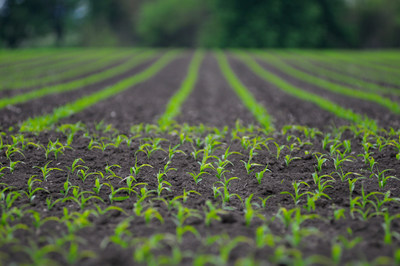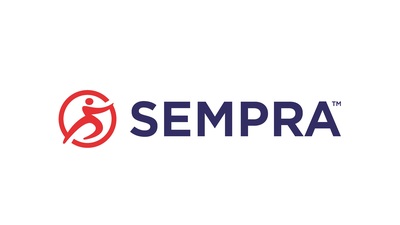SAN DIEGO and LA JOLLA, Calif., Nov. 9, 2020 /PRNewswire/ -- Sempra Energy (NYSE: SRE) and the Salk Institute today announced a new project to advance plant-based carbon capture and sequestration research, education and implementation to help address the climate crisis. Sempra Energy is donating $2 million to the Salk Institute to help fund the five-year project.
"There is incredible urgency to address our changing climate," said Salk Professor Wolfgang Busch, co-director of the Institute's Harnessing Plants Initiative (HPI). "As the world's population increases to 10 billion or more, global warming is going to put incredible pressure on our ability to meet humanity's needs for food, fuel and fiber. Sempra's investment in research to develop solutions that remove excess carbon from the atmosphere is an investment in our shared future."
"At Sempra Energy, we support partnerships designed to produce sustainable and responsible change, and we believe the Salk Institute is an ideal partner to make true progress in the fight against climate change," said Kevin Sagara, group president of Sempra Energy and advisory committee member of HPI. "This project has the potential to help remove significant amounts of carbon from entering our atmosphere and aligns with Sempra Energy's portfolio to advance the global energy transition to lower-carbon energy sources."
Sempra Energy will be the lead sponsor of the Salk Institute's "Sequestering Carbon Through Climate Adapted Sorghum" project, part of the Institute's Harnessing Plants Initiative. HPI is an innovative, scalable and bold approach to fight climate change by optimizing a plant's natural ability to capture and store carbon and adapt to diverse climate conditions. Salk researchers aim to develop these Salk Ideal Plants™ to mitigate the disastrous effects of climate change by drawing down significant amounts of the excess carbon in our atmosphere while also providing more food, fuel and fiber for a growing population. With Sempra Energy's funding, over the next five years Salk scientists will work to develop a drought-tolerant, carbon-sequestering grass (sorghum) variety designed to grow on land in Southern California and store carbon in the soil for use with grain production, grazing or bio-energy feed stocks.
HPI aims to develop crop plants that have significant global acreages to store long-lasting carbon in the soil. Crop plants that are engineered to store more carbon in the soil for longer can lead to a potentially enormous reduction in atmospheric carbon dioxide (CO2). The six crops that HPI is developing (including sorghum) can have a global impact on carbon levels. HPI estimates that if, worldwide, 70% of the target crops are converted into carbon-sequestration-enhanced crop plants, 1.5 to 6 gigatons of CO2 can be sequestered per year, the equivalent of up to as much as one-third of human-caused CO2 emissions that accumulate in the atmosphere each year.
Salk Professor Joanne Chory, co-director of the Harnessing Plants Initiative, said, "Our plant-based approach to climate change offers a win-win-win for improving soil health, feeding the world's burgeoning population and sequestering carbon affordably with the potential for global scale. Salk's plant scientists are very excited at how much Sempra Energy's generosity will help move our critical research forward."
About Sempra Energy
Sempra Energy's mission is to be North America's premier energy infrastructure company. With more than $60 billion in total assets at the end of 2019, the San Diego-based company is the utility holding company with the largest U.S. customer base. The Sempra Energy companies' more than 18,000 employees deliver energy with purpose to over 35 million consumers. The company is focused on the most attractive markets in North America, including California, Texas, Mexico and the LNG export market. Sempra Energy has been consistently recognized for its leadership in sustainability, and diversity and inclusion, and is a member of the S&P 500 Utilities Index and the Dow Jones Utility Index. The company was also named one of the "World's Most Admired Companies" for 2020 by Fortune Magazine.
About the Salk Institute
Every cure has a starting point. The Salk Institute embodies Jonas Salk's mission to dare to make dreams into reality. Its internationally renowned and award-winning scientists explore the very foundations of life, seeking new understandings in neuroscience, genetics, immunology, plant biology and more. The Institute is an independent nonprofit organization and architectural landmark: small by choice, intimate by nature and fearless in the face of any challenge. Be it cancer or Alzheimer's, aging or diabetes, Salk is where cures begin. Learn more at: salk.edu.
SOURCE Sempra Energy


